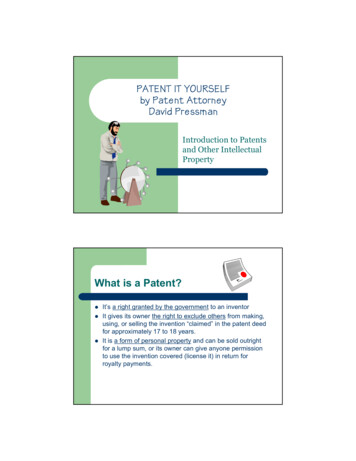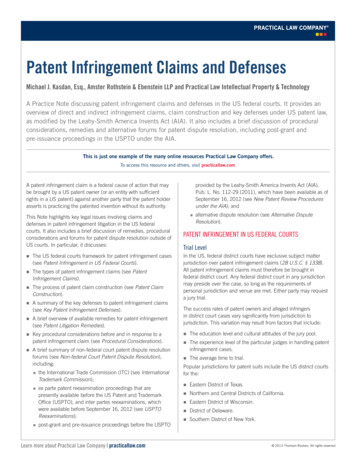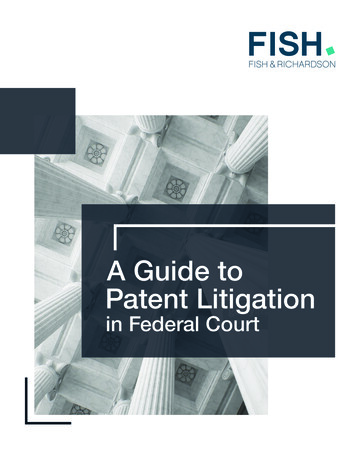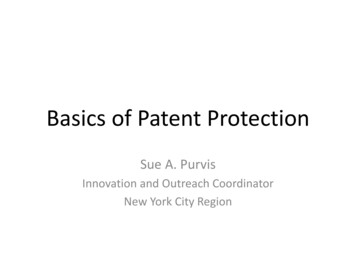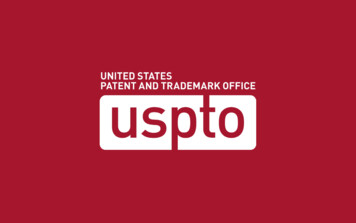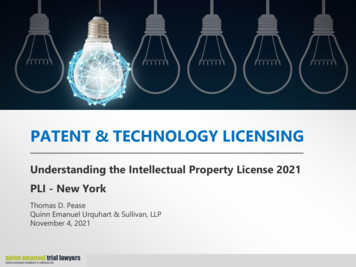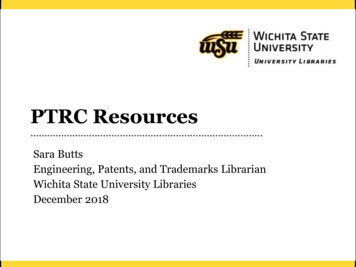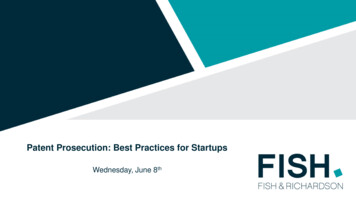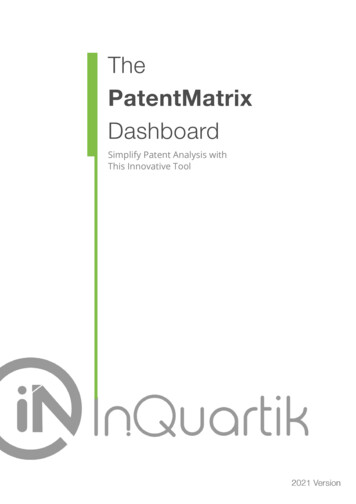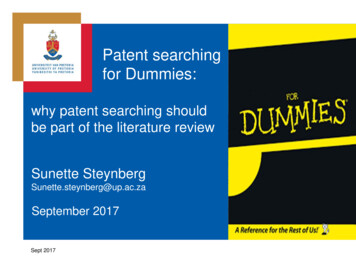
Transcription
Patent searchingfor Dummies:why patent searching shouldbe part of the literature reviewSunette SteynbergSunette.steynberg@up.ac.zaSeptember 2017Sept 2017
Contents 2Why search patents?Overview of patents in generalDerwent Innovations IndexContact at the Innovation Office
Why do we need to search patents? Often patents are the only documents for theR&D activities of a company If you are going to work in industry, your job maydepend on your knowing about 0766172691
Why Researchers shouldcare about patents Most up-to date source of informationon applied technology Up to 80% of current knowledge is only inpatents Avoid duplication of Research and spending Find solutions to technical download en/patents for researchers.pdf4
Protection of intellectual property cantake one of four forms:TrademarkCopyrightPatentsTrade Secrets
What is a patent? A patent for an invention is the grant of a propertyright to the inventor for a limited period of time(usually 20 years from date of application) Grants to the owner the right to exclude othersfrom making, using, offering for sale, selling, orimporting the invention into the country where thepatent is obtained In return for this protection, the owner mustdescribe the discovery in full (public disclosure)6
Requirements to patentIn order to be patentable, an invention must be:Novel: The invention in its entirety must nothave been known or used beforeUseful: The invention must be fit for somedesirable practical purpose.Non-obvious in light of the prior art; notapparent to someone with “ordinary skill in theart”
Three Types of Patents Utility patents. For new and useful processes,machines, articles of manufacture,compositions of matter, or any usefulimprovements thereof. (20 yrs) Design patents. For new, original, andornamental design for an article ofmanufacture. Protects only the appearance,not structure or utilitarian features. (Dxxxxxx)(14 yrs) (Examples: iPod case; Koosh balldesign) Plant patents. For invention, discovery orasexual reproduction of distinct and newvarieties of plants. (PPxxxxx) (20 yrs)
Example of a Utility PatentUS Patent 6,934,812Title: Media player withinstant play capability
Example of a Design PatentUS Patent D506,476Title: Media Device
Plant PatentA distinct new varietyof plantUS Patent PP21,535 P2Title: Sweet orange tree
Derwent Innovations Index1212/11/2017
Searchable parts of a patent Topic: searches title and abstract Title: searches only the title Inventor: Searches the inventor’s name, e.g.Smith, A J Patent number: enter complete or partialpatent number, e.g. US5723470-A Assignee: Company name, e.g. University ofPretoria1312/11/2017
Collaboration betweenProf. De Wet Swanepoel(Communication Pathology)and Dr Herman Myburg(EEC Engineering)1414
15
16
Results similar to invention1712/11/2017
Includes a drawing1912/11/2017
Inventor and Assignee20
21
22
Different from Web of Science searching Different search engine, different search rules No stopwords, e.g. Vitamin D will also retrieveVitamin A, Vitamin B, Vitamin C Cannot use the Near operator Integrated with All DatabasesInsert date under view on slide master
What are some limits to patents? No experimental proof of prototypes or proofof chemicals actually tested or synthesized Many patents might be invalidated if challenged Titles can be very short and simple; not easilydescribing the invention Recommend: Derwent class code searching
Derwent Innovation UP has only one loginBetter search functionalityIncludes claimsIncludes full text2512/11/2017
What to do when someonehas a patentable idea? Refer to Refilwe Ngoato,refilwe.ngoato@up.ac.za,012 420 4568 First patent, then publish –can do both, but in this order.2612/11/2017
Who wants to expand this skill? Information searching and classification are theInformation specialist’ skill. Patent searching is a scare skill and worth topursue. Please contact me if you are interested intraining.2712/11/2017
Searchable parts of a patent Topic: searches title and abstract Title: searches only the title Inventor: Searches the inventor's name, e.g. Smith, A J Patent number: enter complete or partial patent number, e.g. US5723470-A Assignee: Company name, e.g. University of Pretoria 12/11/2017 13

